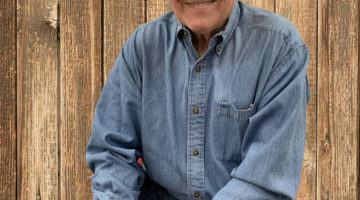Documentaries do not always seem to be on people’s must see list but Blackfish is definitely a must see.
The director, Gabriela Cowperthwaite was initially drawn to making this documentary after learning of the death of SeaWorld trainer Dawn Brancheau.
Her focused changed to exposing the brutality of capturing these highly intelligent, social animals, and the effects that follow due to a life in captivity. It is proven that these animals have a part of their brain that humans do not have.
Witnessing the initial capture back in the 70’s of these Orcas was truly gut wrenching. SeaWorld sent people to Puget Sound, WA to trap the Orcas, specifically the babies. When they succeeded the remaining family of about 20 Orcas lingered close by, bobbing up and out of the water screeching for the babies that were taken. The remaining Orca family was left mourning their baby they had been kidnapped. As the story progresses we learn that SeaWorld actually consciously misinforms the public on its tours. Old visitor footage shows SeaWorld guides explaining that Orcas live longer in captivity thanks to the nutrients provided by the SeaWorld family. In actuality, they die around age 30 in captivity, but females can live up to 100 in the wild.
 Tilikum was one of the main stars of the film, the largest male Orca in captivity. He had been transferred to Orlando after killing a trainer in Sealand Park in Canada. Being a massive male, SeaWorld purchased this animal to create offspring. Unfortunately Tilikum was too large for his new home and often became the subject of abuse from smaller younger female Orcas. These Orcas are similar to humans in that there are many different “nationalities” of Orcas. Just as different ethnicities of humans would not get along in a cage together, all Orcas are not going to cohabitate peacefully. Another heart wrenching example of the cruelty of imprisoned Orcas was the story of a mother and baby whale. Due to an uncooperative calf, SeaWorld decided to split up mother and baby and send the 4-year-old calf to a different SeaWorld. The moment that child whale left the tank the mother huddled in a corner echo locating for hours in pitches the trainers never heard before. How can you dispute the level of intelligence and social interaction these animals have?
Tilikum was one of the main stars of the film, the largest male Orca in captivity. He had been transferred to Orlando after killing a trainer in Sealand Park in Canada. Being a massive male, SeaWorld purchased this animal to create offspring. Unfortunately Tilikum was too large for his new home and often became the subject of abuse from smaller younger female Orcas. These Orcas are similar to humans in that there are many different “nationalities” of Orcas. Just as different ethnicities of humans would not get along in a cage together, all Orcas are not going to cohabitate peacefully. Another heart wrenching example of the cruelty of imprisoned Orcas was the story of a mother and baby whale. Due to an uncooperative calf, SeaWorld decided to split up mother and baby and send the 4-year-old calf to a different SeaWorld. The moment that child whale left the tank the mother huddled in a corner echo locating for hours in pitches the trainers never heard before. How can you dispute the level of intelligence and social interaction these animals have?
Trainers were given very little background information about the killings in other parks. Anytime they questioned something they were made to feel foolish for asking. Also it was implied that if you did not agree then someone else was waiting for their job; aka shut up or you’re fired. Often the trainers had instincts about foul play but cared so much for the whales they didn’t want to leave their jobs. The information is both astounding and horrifying and after this viewing I personally will no longer support this park. The filmmaker was not trying to create a protest against SeaWorld. The park generates 2 billion dollars a year and to shut them down is impossible. Instead, she stated during the Q&A that she would like to see SeaWorld use its facilities to rehabilitate animals in need and then release them back into the wild.
There are coves in the ocean that can be blocked off so these animals can seem like they are in the wild but still in a controlled environment. Through her research she realized there was so much more to the story than just a whale killing a trainer. She wanted to make you aware of what truly happens with these whales and for you to make your own decision. Trainers are no longer to be in the pool with these whales, a decision that was made by OSHA (Occupational Safety and Health Administration). SeaWorld is trying to appeal that. Keep in mind that anytime you attend one of these killer whale shows you are risking the possibility of witnessing a death in front of your eyes as well as supporting the institutionalized cruelty of beautiful and intelligent animals.









